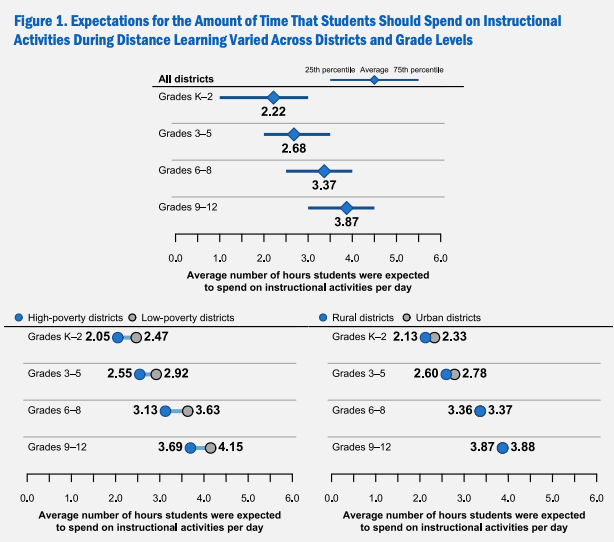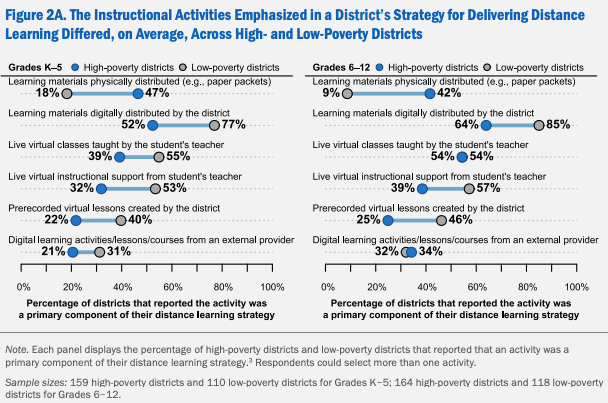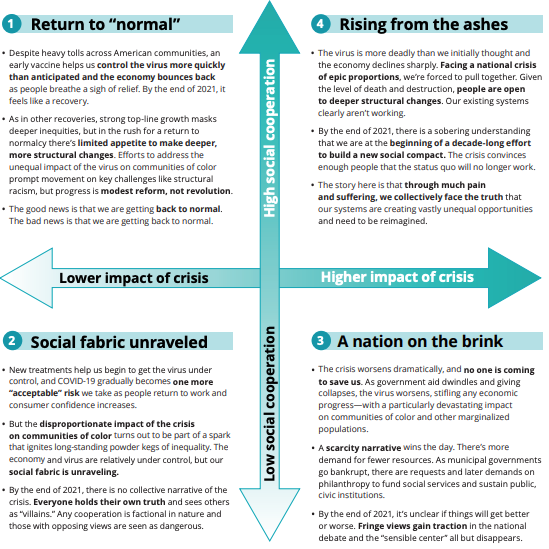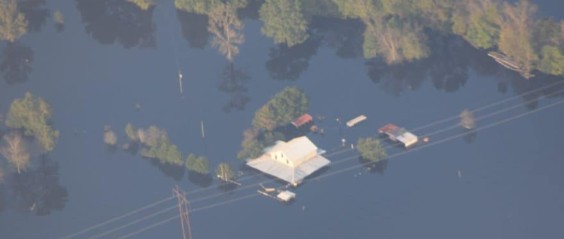Need to know: COVID-19
- As of noon on Friday, July 24, there were 108,995 confirmed cases. See cases by county here.
- The share of positive tests as a percentage of total tests is 9%.
- As of July 24, 1,182 people were hospitalized with ~28% of ICU beds available.
- From March 15 to July 23, 1,191,101 North Carolinians have filed unemployment insurance claims. The state has paid 822,317 claimants.
Dropping knowledge
Results from a new survey from American Institutes for Research show that high-poverty districts were expected to spend less time on instructional activities per day during distance learning this spring than students in low-poverty districts. It also shows elementary school students were expected to spend the least amount of time on instructional activities. The survey includes results from 474 school districts as of late May 2020.

The survey also looks at the type of instructional activities required, including whether the district physically or digitally distributed learning materials and whether teachers provided live virtual classes and instructional support. Here again there are large gaps between high-poverty and low-poverty districts.

Contextual healing
Brookings Institute just announced a new project, the COVID-19 Metro Recovery Watch, with the goal of “informing local and state recovery strategies from COVID-19’s historic economic impacts in ways that link near-term resilience to longer-term economic transformation, racial equity, and economic inclusion.”
As part of that, they published an interactive “Metro Recovery Index” that tracks number of jobs, unemployment rate, real estate, small business hours and closings, job postings, and air traffic for metropolitan areas with at least 250,000 residents. The index compares this data for individual metro areas with other areas of similar size. In the graphic below, the colors represent performance among size class, with red being weakest and blue being strongest.
As you can see, in the Raleigh-Cary metro area, jobs have declined 11.3% and the unemployment rate has increased by 8.5%. Area travel has decreased substantially (82.3%) and real estate listing prices have increased 1.3% from this time last year. Visit the website to see this data for eight other metro areas in North Carolina.

For your consideration
What will the next year look like? For families, businesses, schools, and others, it is increasingly hard to plan for the next year due to the widespread uncertainty around the impact of COVID-19.
The Stanford Social Innovation Review recently published an article highlighting how to use scenario planning to make strategic decisions. The authors, part of the Monitor Institute at Deloitte, explain what scenario planning is and then outline four scenarios based on two critical uncertainties: the impact of the crisis and the level of social cooperation. See the scenarios below, and read the full report here.

What we're reading
What could happen if the pandemic and a major hurricane collide?
As the coronavirus continues to cause chaos in North Carolina, forecasters predict an above-normal hurricane season. State officials urge people in at-risk areas to make plans now.... Read the rest-
Coronavirus uncertainty impacts local farm economies
-
Most NC Students Will Begin The Year Learning From Home
-
Minority, Low-Income Freshmen Not Filling Out FAFSA
-
Covid-19 Could Permanently Close Up to a Third of Museums
-
Here’s one way to make daily covid-19 testing feasible on a mass scale
-
Experimental Blood Test Detects Cancer up to Four Years before Symptoms Appear


